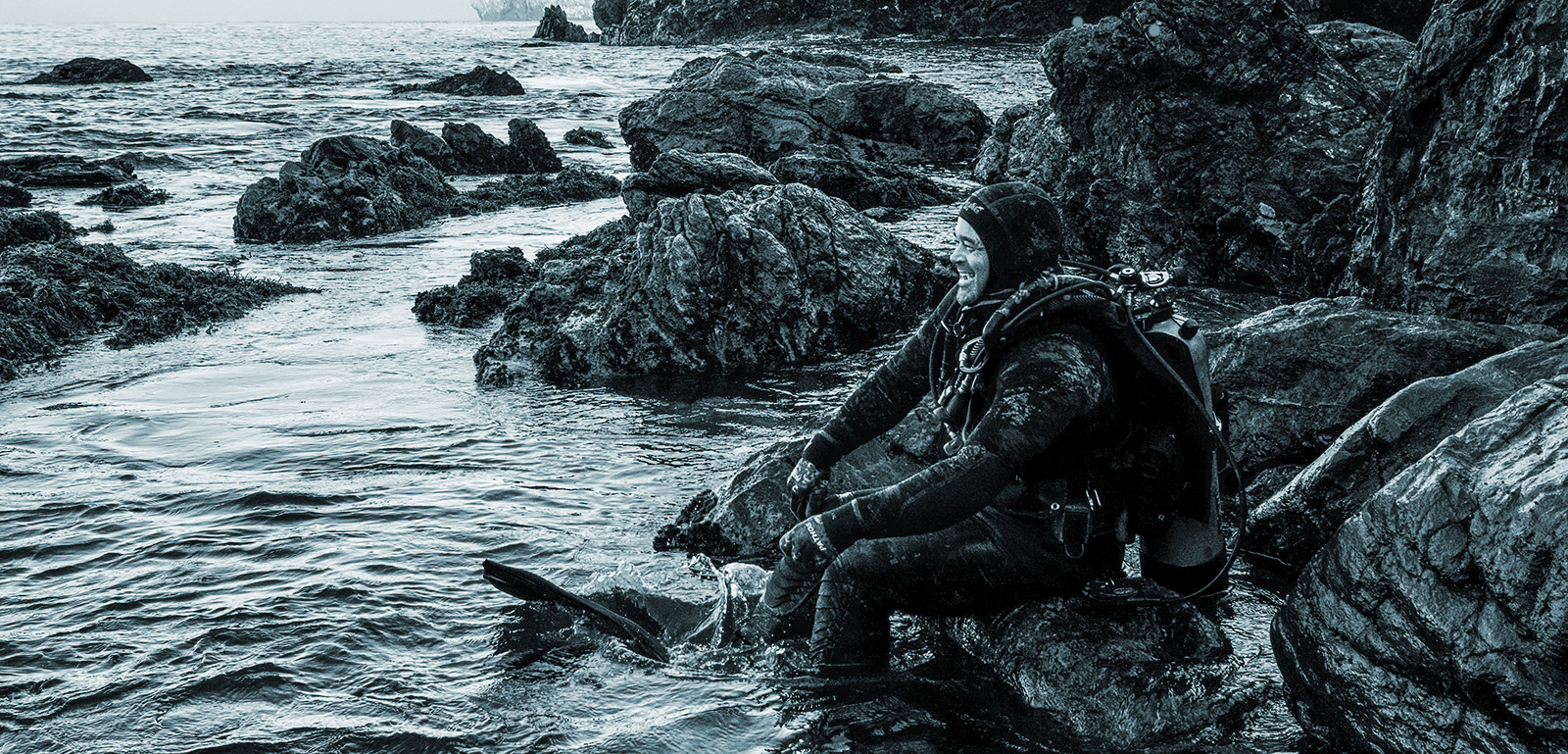Coastal Job: Jade Carver
Justin Barrett dives for jade and sculpts it into objects inspired by the natural world.
Article body copy
Some people work in cubicles, others work in kitchens, but the most intriguing workplace of all may be the coast. Meet the people who head to the ocean instead of the office in our Coastal Jobs series.
Justin Barrett is part of a community of divers who hunt for underwater jade in Big Sur, California. At his workshop in nearby Pacific Grove, he carves his finds into sculptures and jewelry that weave together elements of the natural world.
Finding a piece of jade does something to me at my core. My heart skips a beat. It’s special because I know I’m the first person to ever touch this stone—if someone had seen it, they would’ve picked it up. The first time I went jade hunting 23 years ago, the sun was low and the horizontal rays started lighting up beautiful pieces of jade everywhere on the beach. I was hooked. Searching for and carving jade became a lifestyle.
People have been collecting jade in Big Sur for about 80 years, but when I started, there were very few sculptors, and what we made was considered hippie jewelry. It wasn’t taken seriously. Now there are 20-odd people making jade jewelry here, with more starting all the time, which is great. My predecessors were secretive and cagey; they failed to understand that growth validates what we do. It builds the culture.
Jade forms under high pressure at subduction zones and is typically found around mountains or rivers, but Big Sur is the only known undersea source of quality nephrite—one of two types of jade—in the world. Our jade is not particularly pure or well known, so it is less expensive, but it has an intrinsic value because of the subculture that surrounds it.
To find the best pieces, you have to dive. First, you must navigate a 55-meter cliff with 45 kilograms of gear on your back, down a narrow trail subject to washing out. In the water, conditions are scary—rugged, dangerous, and unpredictable. You’re dealing with kelp, currents, and swell. Visibility can be less than a meter and a half. There are also elephant seals, sea lions, and the big toothy things—sharks. Most days, a small group of us keep an eye on each other, which gives me a little peace of mind knowing that I’m not as likely to float into the abyss without someone realizing.
I’m 40 now, and if my body holds up, I think I’ve got another 20 years of diving in me, at least. If it doesn’t hold up, then I can sit and carve stone for as long as I’m around.
Out of necessity, I’ve built my own tools, adding another creative aspect to my craft. When I was just starting out, I fashioned my first rock saw out of parts from a broken house furnace and an old weight bench. I gave one of my mentors the honor of cutting the first stone. But not knowing any better, I had mounted the motor the wrong way. The stone spun back and hit him in the chest. He gave me some guidance, and with fine-tuning, eventually the saw was functional.
I love being able to give to society in a way that’s positive. When a person connects with my art, it’s like they’re connecting with a piece of me. I like to think that when I carve, I’m creating artifacts. We could have a whole other civilization digging these up some day. Who knows where their journey will take them.

